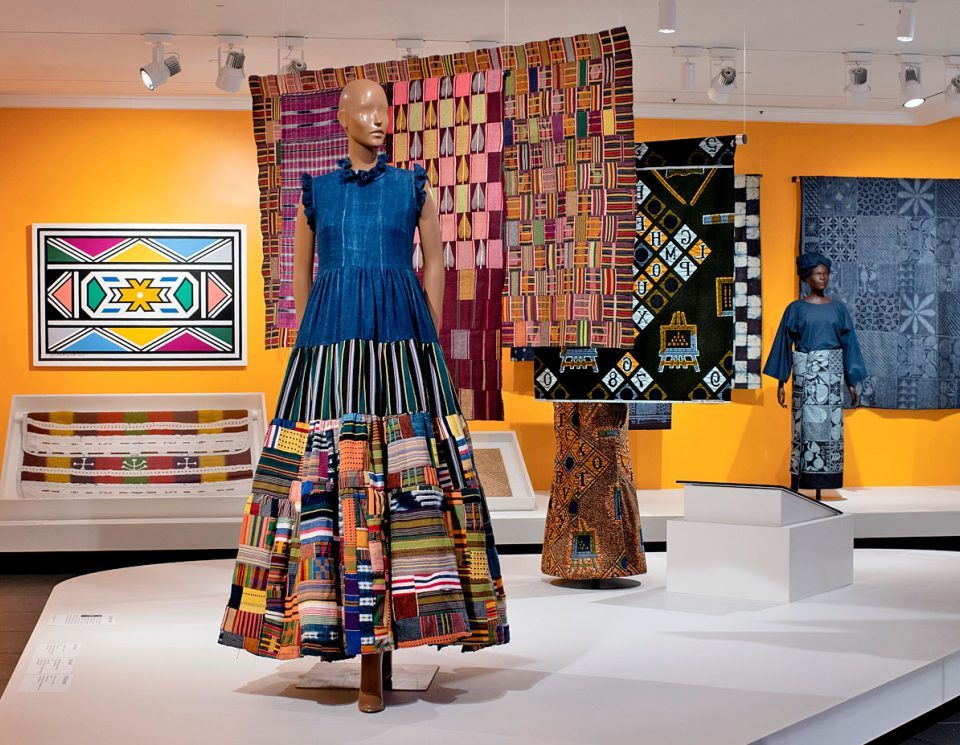
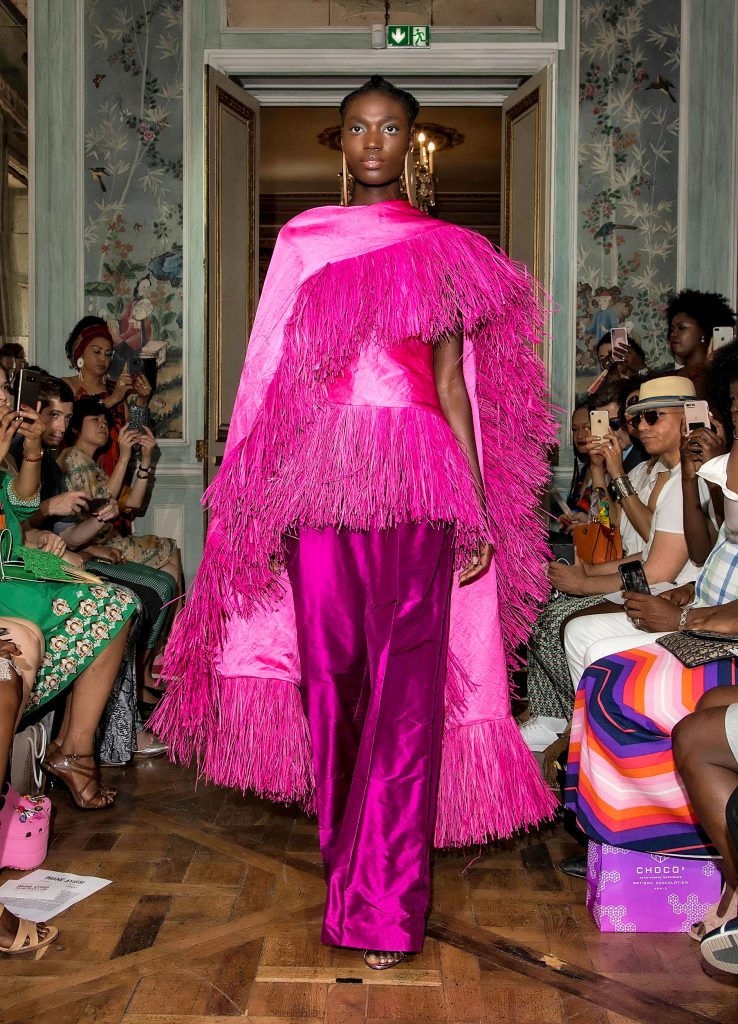
Imane Ayissi, Mbeuk Idourrou collection, Paris, France, Autumn/Winter 2019. (Photo: Fabrice Malard / Courtesy of Imane Ayissi)
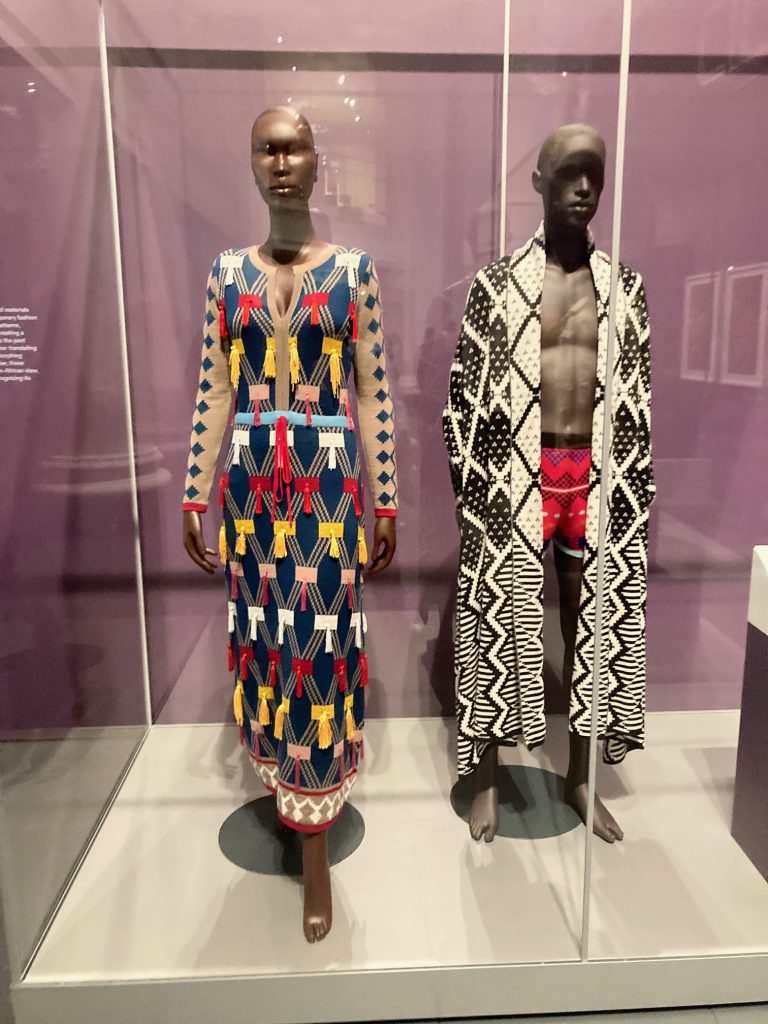
The SizzleArts team attended the Africa Fashion exhibition, which was on view June 23–October 22, 2023. The exhibition featurerd over 180 works, including fashion, music, film, visualart, and photography, as well as textiles and jewelry from the Museum’s Arts of Africa collection.
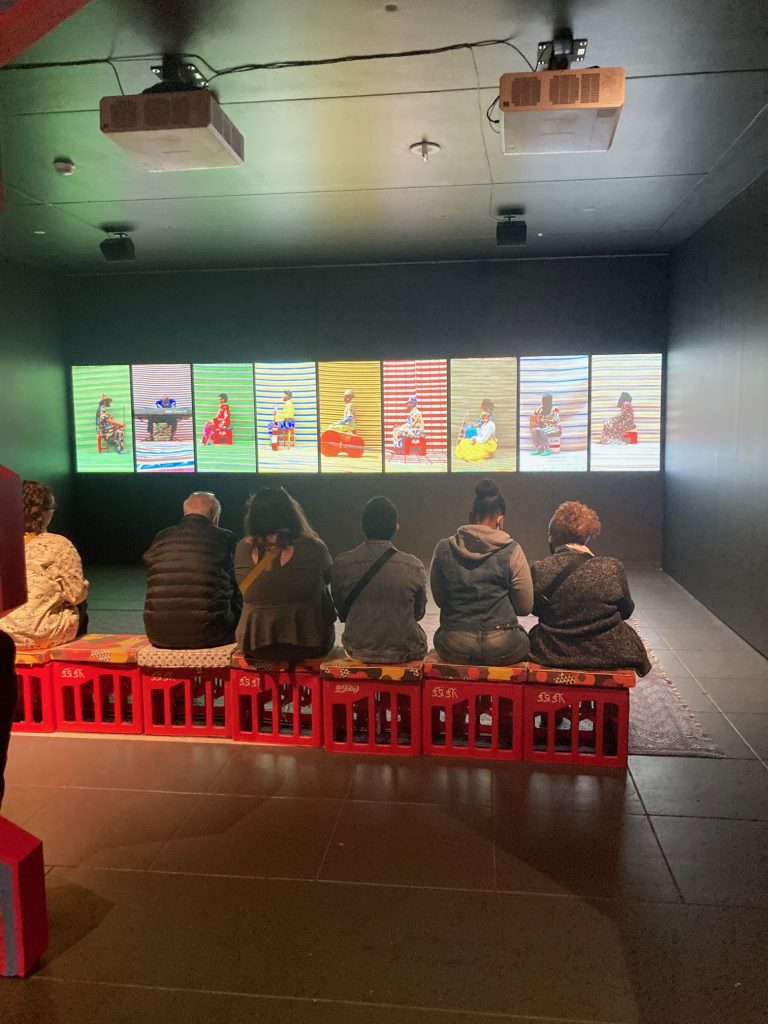
The exhibit celebrates the outstanding creativity, ingenuity, and global impact of African fashions from the start of the independence era to today, Africa Fashion is the largest-ever presentation of this subject in North America. Through works by iconic designers and artists from the mid-twentieth century to the present, the exhibition illuminates how fashion, alongside the visual arts and music, played a pivotal role in Africa’s cultural renaissance during its liberation years, and how those elements laid the foundation for today’s fashion revolution.
Africa Fashion begins with the independence era, from the 1950s through the 1990s. This period inspired a dramatic political, social, and cultural shift throughout the continent. Pan-Africanism surged, instilling a unified sense of identity—with fashion and artistic expression at its heart. The Cultural Renaissance section explores this time of radical change through fashion, photography, books, and ephemera such as protest posters, vintage magazine covers, and iconic album cover art. In Politics and Poetics of Cloth, visitors can explore the ways in which the making and wearing of Indigenous cloth became a strategic political act. Textiles from the Museum’s Arts of Africa collection complement a display of wax prints, commemorative cloth, àdìrẹ, kente cloth, and bògòlanfini. The first generation of African designers to gain global attention is highlighted in the Vanguard section. Works by Kofi Ansah (Ghana), Naima Bennis (Morocco), Shade Thomas-Fahm (Nigeria), Chris Seydou (Mali), and Alphadi (Niger), dating from the mid to late twentieth century, are shown together for the first time in the United States alongside a dynamic installation of fashion photography from the period.
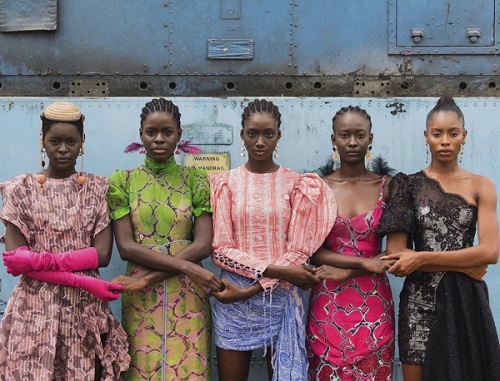
The Brooklyn Museum hosted a captivating exhibition that positions Africa as a formidable fashion hub, brimming with creativity, ingenuity, and a distinct aesthetic heritage. Running until October 22, “African Fashion” goes beyond being a mere display of stunning garments on mannequins. Instead, it serves as an illuminating exploration of artistic visions that have emerged from Africa and its diaspora since the mid-20th century, laying the historical foundation for the current stylistic revolution.
This exhibition takes place precisely a century after the Brooklyn Museum became the first arts institution to introduce African art to North American audiences, making it an ideal venue for curators Ernestine White-Mifetu and Annissa Malvoisin. Over 300 objects are featured, encompassing not only fashion and textiles but also jewelry, art, photography, video, vintage posters, magazine covers, and more. The collaboration with the Brooklyn Public Library allows visitors to check out copies of the historic books displayed in the exhibit, marking it as the most extensive presentation of its kind in a North American venue.
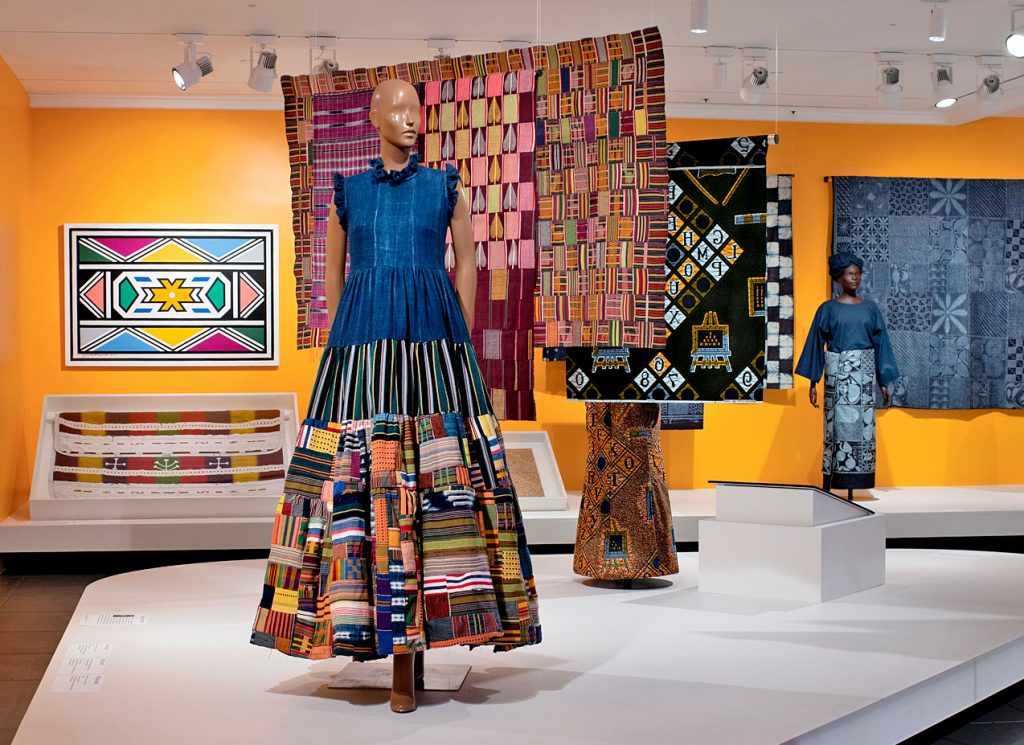
Installation view of “Africa Fashion.” Courtesy of the Brooklyn Museum.
Originally launched at the Victoria and Albert Museum in London in 2022, “Africa Fashion” has been adapted for its Brooklyn audience. Co-curator Ernestine White-Mifetu emphasizes the insertion of narratives from North America, creating a unique blend of African and diasporic identity with an American flair. The exhibit includes works by influential Brooklyn-based designers such as Aurora James and Christopher John Rogers, adding a contemporary and local touch.
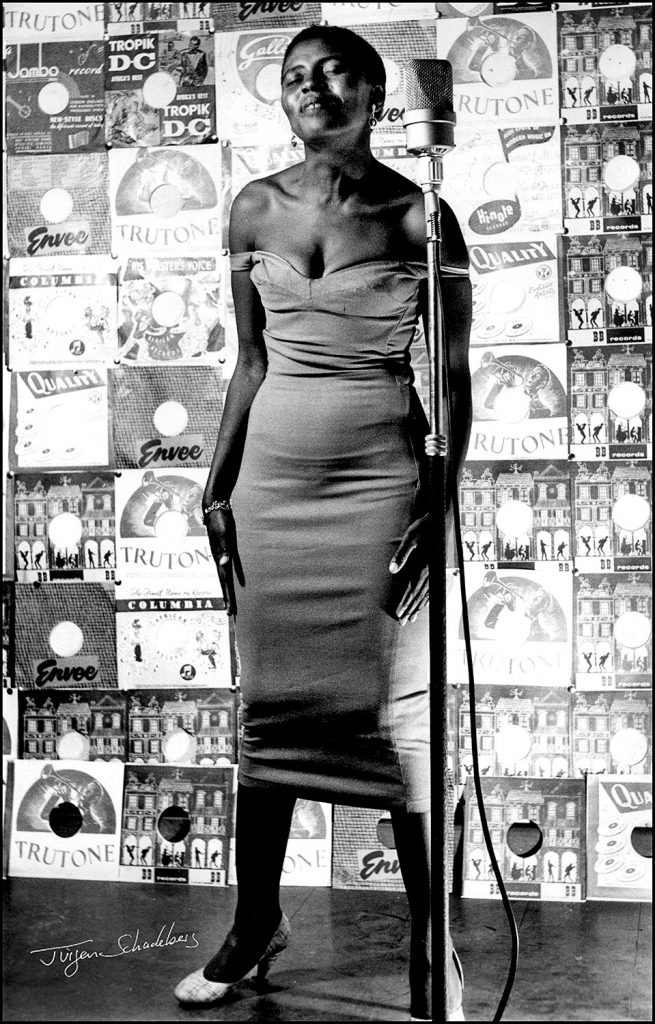
Miriam Makeba, photographed by Jürgen Schadeberg for the cover of Drum magazine in 1955. © Estate of Jürgen Schadeberg (Photo: Courtesy of the Estate of Jürgen Schadeberg)
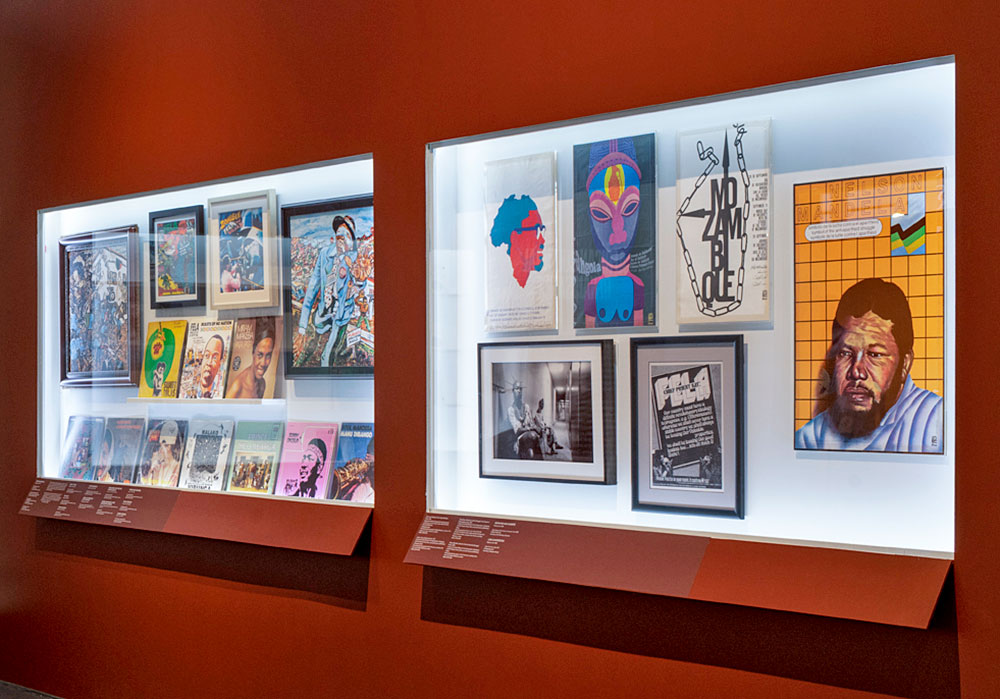
The exhibition unfolds with a historical perspective, starting with the end of colonial rule in Africa in the 1950s and 1960s. The Year of Africa in 1960 marked the liberation of multiple African nations, leading to a period of radical self-reinvention and a cultural renaissance. FESTAC, a series of festivals from 1966 to 1977, emerges as a crucial context, hosting artists, writers, performers, and musicians, making it the largest cultural event on African soil. The exhibit portrays the vibrant celebration of Black and brown creativity during this transformative time.
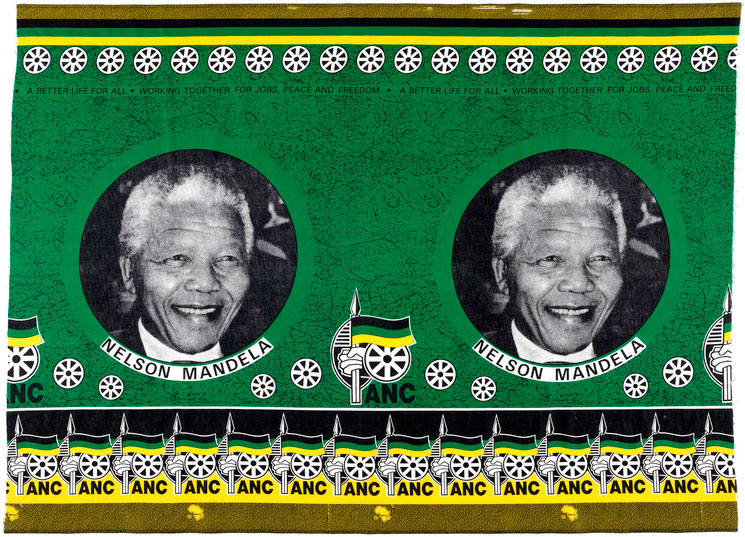
The showcased garments reflect the emancipation of the continent, with fabric being used as a visual language to engage with the new political landscape. The exhibit features commemorative cloths observing significant political events, including Nelson Mandela’s presidency in 1991 and Barack Obama’s inauguration in 2008.
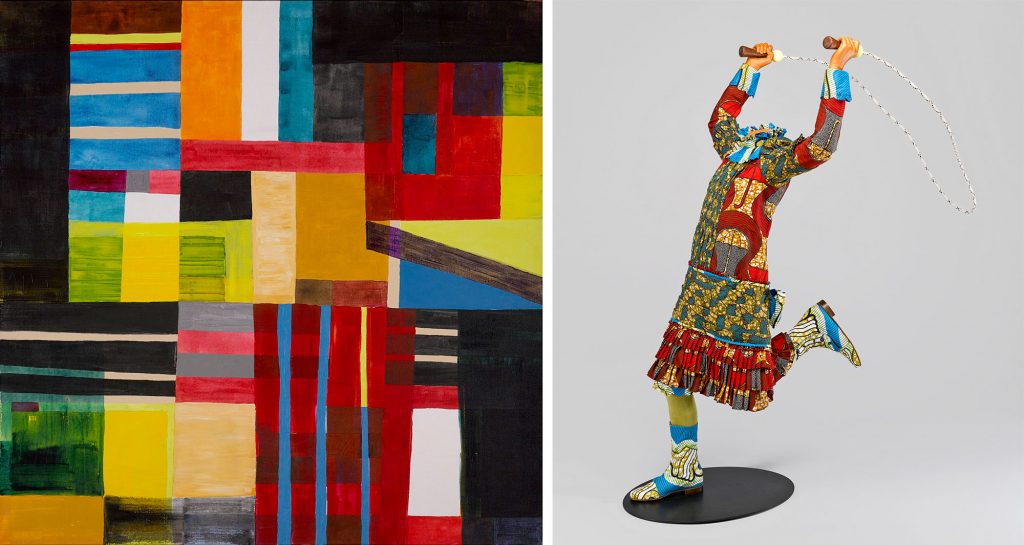
Left: Atta Kwami, Another Time (Ɣebubuɣi) (2011). Right: Yinka Shonibare, Skipping Girl (2009) from “Mother and Father Worked Hard So I Can Play” series. © Yinka Shonibare MBE (Photo: Brooklyn Museum). Courtesy of the Brooklyn Museum.
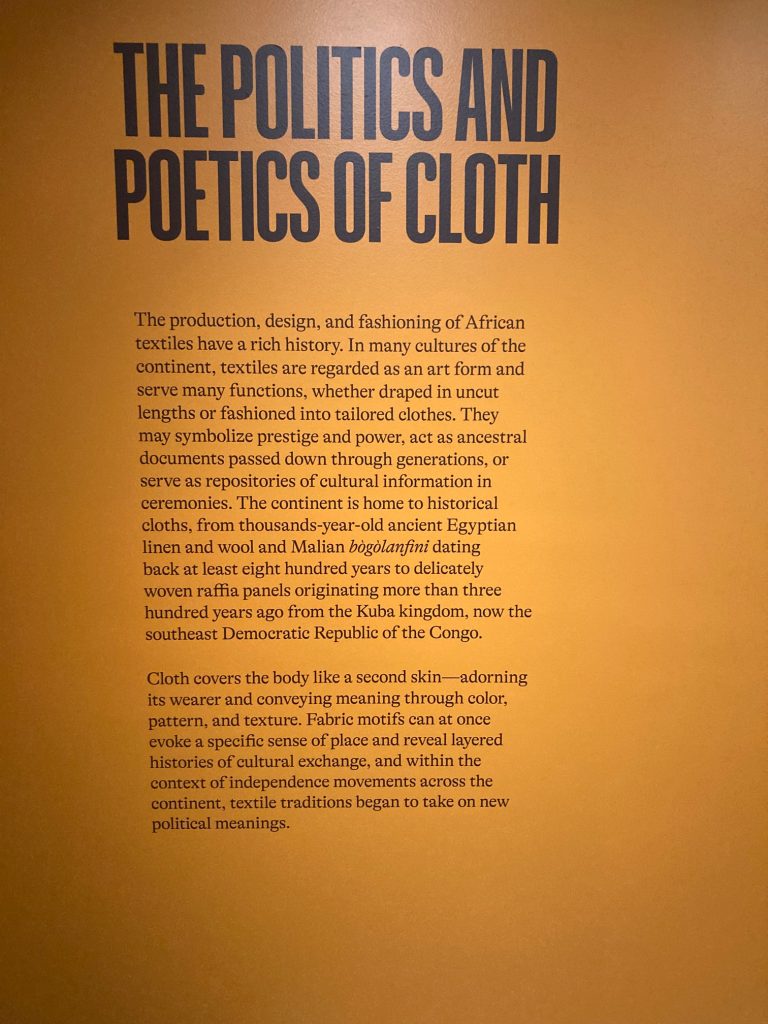
A section devoted to textile traditions across the continent explores silk kente, raffia-woven kuba, indigo-dyed àdìrẹ, strip-woven aṣọ-òkè, and mud-painted bògòlanfini. The exhibition highlights the influence of textiles on modern African visual arts, with artists like Atta Kwami and Esther Mahlangu drawing inspiration from traditional patterns.
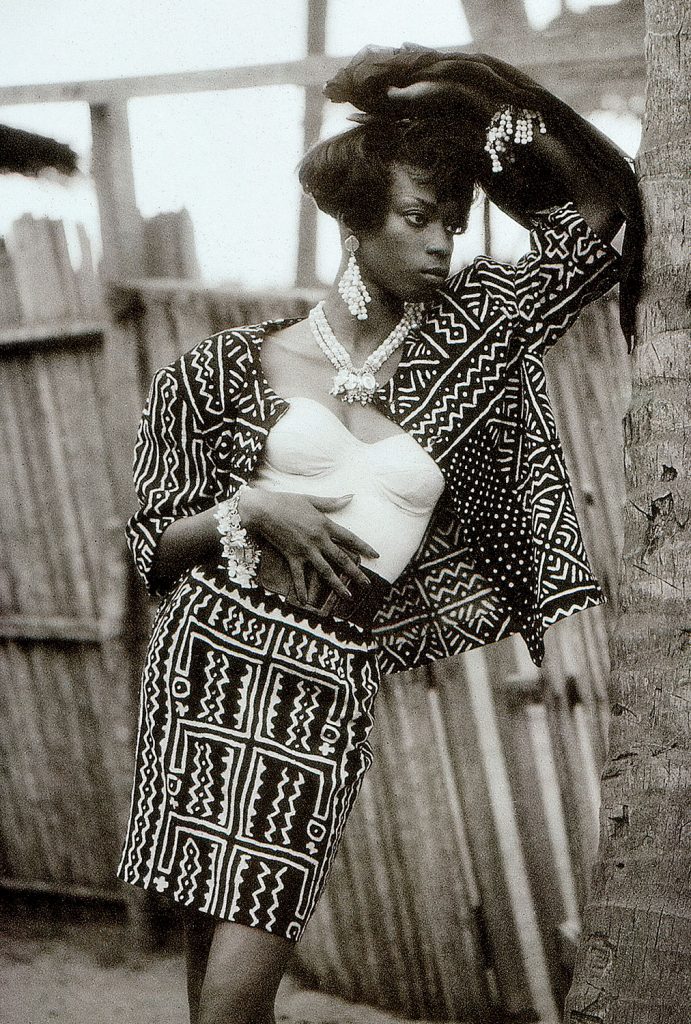
Design by Chris Seydou. © Nabil Zorkot. Courtesy of the Brooklyn Museum.
The exhibition recognizes a group of dressmakers and tailors transformed into modern 20th-century fashion designers. Designers like Chris Seydou, Kofi Ansah, Naïma Bennis, Alphadi, and Shade Thomas-Fahm are featured, showcasing intriguing hybrids of African and Western styles.
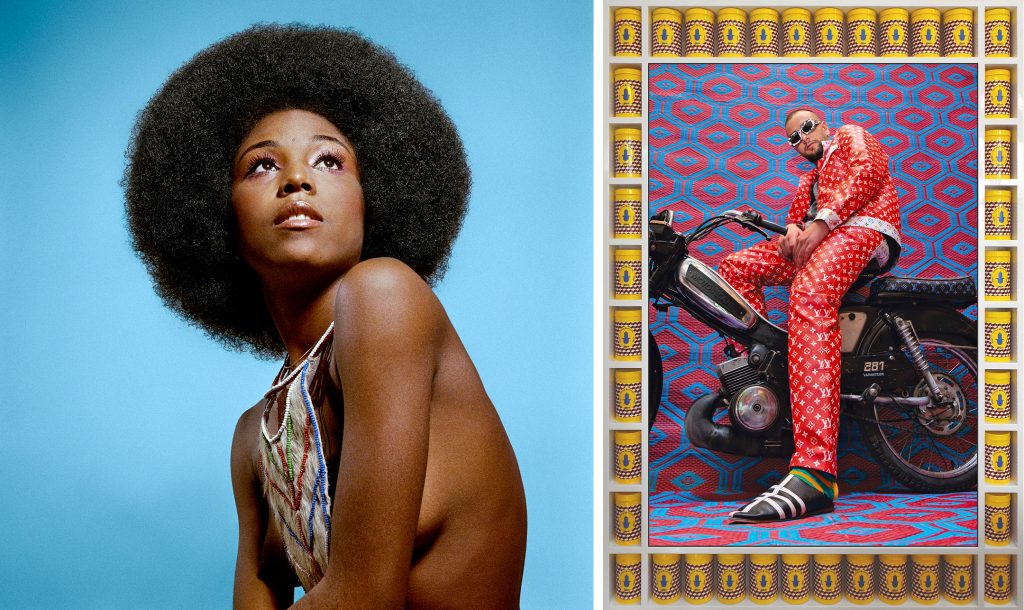
Left: Kwame Brathwaite, Untitled (Model Who Embraced Natural Hairstyles at AJASS Photoshoot) (1970/2018). © Kwame Brathwaite (Photo: Courtesy of the Kwame Brathwaite Archive). Right: Hassan Hajjaj, Draganov (2021). © Hassan Hajjaj (Photo: Courtesy of Draganov and the artist)
A poignant part of the exhibition is dedicated to photography, emphasizing the camera’s role in articulating style for individuals newly free to imagine, dress, and interpret their identity. The showcase includes works by Senegalese artist Omar Victor Diop, echoing the portraiture of Malian photographers Seydou Keïta and Malick Sidibé in the 1960s and ’70s.
The show includes designs by two Brooklyn-based designers Aurora James and Christopher John Rogers. Owing to her Africa-inspired designs, as well as her 15 Percent Pledge initiative that urges fashion retailers to devote at least 15 percent of their shelf space to Black-owned businesses, James was featured on the cover of Vogue—a painted portrait by Jordan Casteel—in 2020. At 24 years old, Rogers earned the top prize at the CFDA/Vogue Fashion Fund the year after he debuted his collection in 2018.
The exhibit concludes with a showcase of contemporary looks reflecting the avant-garde spirit. Notable pieces include a one-off burqa by Artsi Ifrach for Maison ArtC, blending diaphanous crinoline with a trench coat concept. Thebe Magugu’s Alchemy collection also features prominently, emphasizing African spirituality and ancestral relationships.
Ernestine White-Mifetu expresses the hope that the exhibition challenges viewers’ perceptions of African fashion, emphasizing Africa’s rich and longstanding contribution to the global conversation through visual art, music, and fashion.